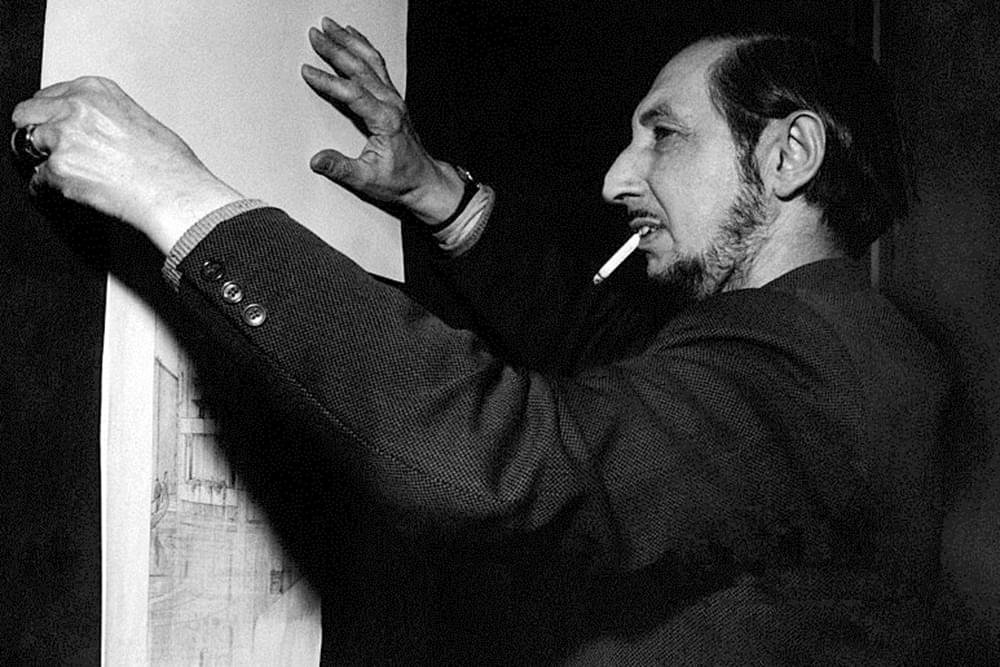
Carlo Scarpa was a prominent modernist 色中色 architect, artist, designer. Scarpa is best know for his architectural works, but during his professional career, tried his hand at many other artistic disciplines such as, glass work, painting and furniture design. It is the intricate characteristics of these crafts and his diverse range of his skills that are often attributed to the techniques and language of his architectural design. His architectural works have been the subject of much intellectual debate and he is considered to be one of modernism's most enigmatic yet important exponents.
Scarpa was born in Venice on June 2, 1906. His father, Antonio Scarpa was an elementary school teacher. When Scarpa was two, the family moved to Vicenza, where Carlo Scarpa attended the Technical High School. After the death of his mother in 1919, the family returned to Venice where he attended the Royal Academy of Fine Arts, focussing his studies on Architectural design. After receiving his diploma in 1926 and having apprenticed for the architect Vincent Rinaldo, Scarpa began teaching architectural drawing at the Academy. He held this position until 1929.
The 1920's and 30's were a pivotal time in Scarpa's professional life, and would shape his future work. Carlo Scarpa never completed a formal architectural degree. He was disinterested in the rigid conventions of a formal design education and its academic rules. The rejection of standardised design principles especially on how materials could or couldn't be used would characterize his work. His sensitivity to materiality and detailing were that of a master craftsman. In 1927 he began a collaboration with master glass workers on the island of Murano. Further work with Cappellini and Co., and a creative director position at Venini Glass Works where he worked from 1934 to 1947, would ignite his passion and skill with the material, as well as his desire to push it and other materials beyond their typical capabilities and use.
It was at this time he also tried his hand professionally in various capacities at industrial and interior design. Scarpa's devotion to various techniques of construction, would provide him with the palate to manipulate architectural detailing and form.
After the second world war Scarpa began to gain recognition internationally. His work became heavily influenced by the great American modernist architects such as Frank Lloyd Wright, whom Scarpa idolized.
The first important commission of this period was the renovation of the Accademia Museum in Venice, located in an old convent. This project was the first of Carlo Scarpa's museum renovations. His design was lauded for its sensitivity to the existing building. The treatment of the renovation became synonymous with Scarpa's skill at renovating historic buildings. It permitted the old and the new to exist harmoniously, yet independently.
Carlo Scarpa remained a teacher at the University of Venice throughout the early postwar period, but began to recieve commissions that would become his masterpieces.
The most important are the Canova Plaster Cast Gallery in Possagno (Treviso) (1955-1957); the Castelvecchio Museum in Verona (1956) perhaps his most significant masterpiece; the Olivetti showroom in Piazza S. Marco, Venice (1957-1958); the Querini-Stampalia Foundation in Venice (1961-1963); the Brion Tomb in San Vito d'Altivole (Treviso) (1969), was a rare example of a standalone building by Carlo Scarpa. However, it remains one of his most symbolic and important works. It represents and culminates Scarpa's career and design mantras perfectly. Quite fittingly, it is where Scarpa is now buried. He died, accidentally, in 1978, aged 72, when he fell down a flight of stairs in Sendai, Japan.